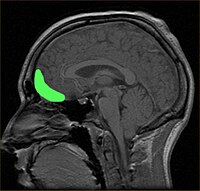
Photo from wikipedia
OBJECTIVES: PICU patients face long-term developmental impairments, partially attributable to early parenteral nutrition (PN) versus late-PN. We investigated how this legacy and harm by early-PN evolve over time. DESIGN: Preplanned… Click to show full abstract
OBJECTIVES: PICU patients face long-term developmental impairments, partially attributable to early parenteral nutrition (PN) versus late-PN. We investigated how this legacy and harm by early-PN evolve over time. DESIGN: Preplanned secondary analysis of the multicenter PEPaNIC-RCT (ClinicalTrials.gov, NCT01536275) that enrolled 1,440 critically ill children from 2012 to 2015 and its 2- (2014–2018) and 4-year (2016–2019) cross-sectional follow-up studies. SETTING: PICUs of Leuven (Belgium), Rotterdam (The Netherlands), and Edmonton (Canada). PATIENTS: Patients and demographically matched healthy control children that underwent longitudinal assessment for physical/emotional/behavioral/neurocognitive functions at both follow-up time points. INTERVENTIONS: In the PEPaNIC-RCT, patients were randomly allocated to early-PN versus late-PN. MEASUREMENTS AND MAIN RESULTS: This within-individual longitudinal study investigated changes in physical/emotional/behavioral/neurocognitive functions from 2 to 4 years after PICU admission for 614 patients (297 early-PN and 317 late-PN, tested at mean ± sd age 5.4 ± 4.2 and 7.3 ± 4.3 yr) and for 357 demographically matched healthy children tested at age 5.6 ± 4.3 and 7.5 ± 4.3 years. We determined within-group time-courses, interaction between time and group, and independent impact of critical illness and early-PN on these time-courses. Most deficits in patients versus healthy children remained prominent over the 2 years (p ≤ 0.01). Deficits further aggravated for height, body mass index, the executive function metacognition, intelligence, motor coordination (alternating/synchronous tapping), and memory learning-index, whereas verbal memory deficits became smaller (working/immediate/delayed memory) (p ≤ 0.05). Adjustment for risk factors confirmed most findings and revealed that patients “grew-into-deficit” for additional executive functions (flexibility/emotional control/total executive functioning) and “grew-out-of-deficit” for additional memory functions (recognition/pictures) (p ≤ 0.05). Time-courses were largely unaffected by early-PN versus late-PN, except for weight loss and limited catch-up for visual-motor integration and alertness in early-PN patients (p ≤ 0.05). CONCLUSIONS: From 2- to 4-year post-PICU admission, developmental impairments remained prominent. Within that time-window, impaired growth in height, executive functioning and intelligence aggravated, and impaired memory and harm by early-PN only partially recovered. Impact on development into adulthood requires further investigation.
Journal Title: Pediatric Critical Care Medicine
Year Published: 2022
Link to full text (if available)
Share on Social Media: Sign Up to like & get
recommendations!